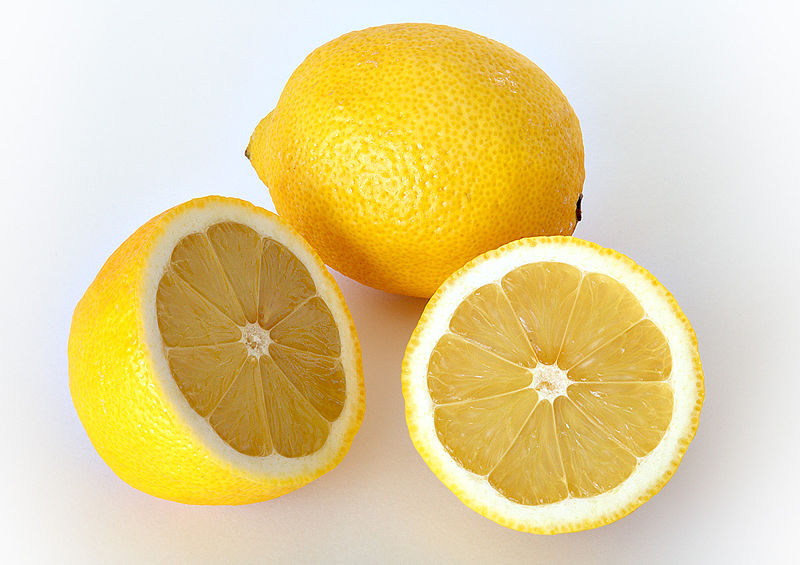 A couple of Wednesdays ago we talked about minerality and I promised to return to the topic of acidity, in terms of why it may/may not really matter. To simplify things for you in an already busy world, here's a quick excerpt to refresh your memory re: the basics on acidity:
If you smell a wine and your mouth waters, you are detecting acidity in the wine. If you take a sip and detect a bit of a tingling sensation on your tongue and/or the inside of your cheeks start to water, you’re also in the money. Acidity heightens the flavor of foods, or makes the wine more “food-friendly” (and also helps it age). This is a great thing, so long as the wine offers complementary amounts of fruit and tannin to balance the acidity present. This is also described as a wine where all the major components (acidity, fruit and tannin) are in balance. Too much acidity and you’ll experience a razor blade slicing through the center of your tongue. Not my idea of a good time….
A couple of Wednesdays ago we talked about minerality and I promised to return to the topic of acidity, in terms of why it may/may not really matter. To simplify things for you in an already busy world, here's a quick excerpt to refresh your memory re: the basics on acidity:
If you smell a wine and your mouth waters, you are detecting acidity in the wine. If you take a sip and detect a bit of a tingling sensation on your tongue and/or the inside of your cheeks start to water, you’re also in the money. Acidity heightens the flavor of foods, or makes the wine more “food-friendly” (and also helps it age). This is a great thing, so long as the wine offers complementary amounts of fruit and tannin to balance the acidity present. This is also described as a wine where all the major components (acidity, fruit and tannin) are in balance. Too much acidity and you’ll experience a razor blade slicing through the center of your tongue. Not my idea of a good time….
Wait... what was that? Acidity actually heightens the flavors of foods? How can something sour be a good thing?!
Case in point: A couple of years ago I had the great pleasure of making a trip to Cyrpus, a small island in the Mediterranean. I had been to the south of Spain earlier in my life, but this trip really allowed me to experience the Mediterranean culture and cuisine because I was staying with my friend's family. I had a unique opportunity to enjoy the best homecooking and the freshest (of already fresh) fruits and vegetables. Because these ingredients were so juicy on their own, salad took on a whole new meaning. There was no need for even their amazing olive oil to dress it. A squeeze of lemon became our daily marinade - for EVERYTHING. The acidity in the lemon simply enhanced the flavors of the already lushiously delicious flavors of each dish. I live in a lemon-enhanced, dressing free universe to this day.
Remember when it comes to wine I also mentioned the major components of wine need to be in harmony. You want the red, white, pink or bubbly stuff to have enough fruit or other layers of flavors as well as enough dryness (tannin) to complement one another. If acidity is doing the right two-step in your glass, you'll be transported to a higher level of sensory experience, particularly where your food pairing is concerned.
How so? When you pair a wine with higher acidity with foods of a similar profile, the two produce a sweet result. Think of Italian fare and wine. Chianti (made largely from the Sangiovese grape) pairs well with red sauces or tangy cheeses like Fontina. Or think of that Sauvignon Blanc from New Zealand paired with grilled veggies dressed in just a squirt of lemon juice. The veggies taste even sweeter and the wine loses some of that acidic bite it has on its own. I love rubbing a wedge of lemon on my corn on the cob, too. No need for butter at my table!
How does acidity play out in terms of various wines? Generally speaking, cooler climates producer crisper, more acidic wines. Think of the grapefruit flavors that often thrive in your glass of Sauvignon Blanc from Marlborough, New Zealand, for example. Certain grape varietals are also naturally high in acid. Through different processes (the specifics of which we'll save for another day) winemakers can manage acidity during winemaking. This is particularly important for grape varietals that are high in acid, like Sangiovese.
I admit I'm not knowledgeable about the physical or chemical science behind why acidity is such a flavor-enhancer. So if you're a science wiz or everyday food nerd who can give us the skinny, please comment below! Otherwise, I'm happy to just know from experience that there is only truth to this fabulous phenomenon.
What's your experience?
